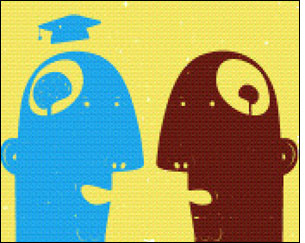Aug 01, 2011Presented below is part three of an 11-part series examining the use of radio frequency identification for unexpected applications. In this chapter, we consider RFID's use in the world of education.
21. Stop, Think and Learn
At Bill Nye's Climate Lab, at the Chabot Space & Science Center in Oakland, Calif., kids and other visitors virtually fill their RFID-enabled Climate Scout ID card by interacting with the 12 RFID-enabled exhibits. In the interactive children's section of the Abbott Oceanarium, at Chicago's Shedd Aquarium, RFID-tagged ocean-floor objects, along with a remote-controlled claw with an RFID reader, help youngsters identify shells and rocks. (See Chabot Space & Science Center Uses RFID to Teach Environmental Science and Aquarium Puts RFID on Its Ocean Floor.)
22. Play, See and Sign
At the Louisiana School for the Deaf, children are learning sign language by playing with RFID-enabled toys. A child uses an RFID reader to scan a toy's tag and view a video on a computer screen that shows someone demonstrating the sign for that item. (See Deaf Children Learn to Sign By Toying With RFID.)
23. Higher Education
The American University of Sharjah and dozens of other universities in the United Arab Emirates are tagging diplomas, to ensure the validity of the documents. The tags contain student information, such as name and academic history, so the diploma can be used to speed registration for additional degree programs. (See UAE Universities Adopt RFID to Thwart Diploma Forgery.)
Teachers at Shorewood High School, outside Milwaukee, are issued RFID-enabled pendants worn on lanyards or carried in pockets. In case of a medical emergency, a fight between students or the appearance of an unauthorized stranger, they can call for help with the press of a button. (See Wisconsin High School Gets 'Help Alert'.)
25. Look Who's Talking
At New York City's Special Education District 75, children who are unable to speak due to autism and other disabilities are learning to put together sentences, thanks to the Logan ProxTalker. The device comes with RFID "sound tags"—each with a word or phrase, and usually a corresponding image—and a reader. When a child moves a tag over the machine, it announces the word that tag represents. (See RFID Gives Voice to Nonverbal Children.)
26. Protecting School Kids
Richland School District Two, in Columbia, S.C., is deploying an RFID-based solution to link parents with children at the end of a school day. It ensures every student is picked up by an appropriate custodian, and maintains a record of that event. (See KidGopher Uses RFID to Make Sure Only Authorized Adults Pick Up Students.)
Click here to read about RFID's use in other unexpected applications.
Illustration: iStockphoto

